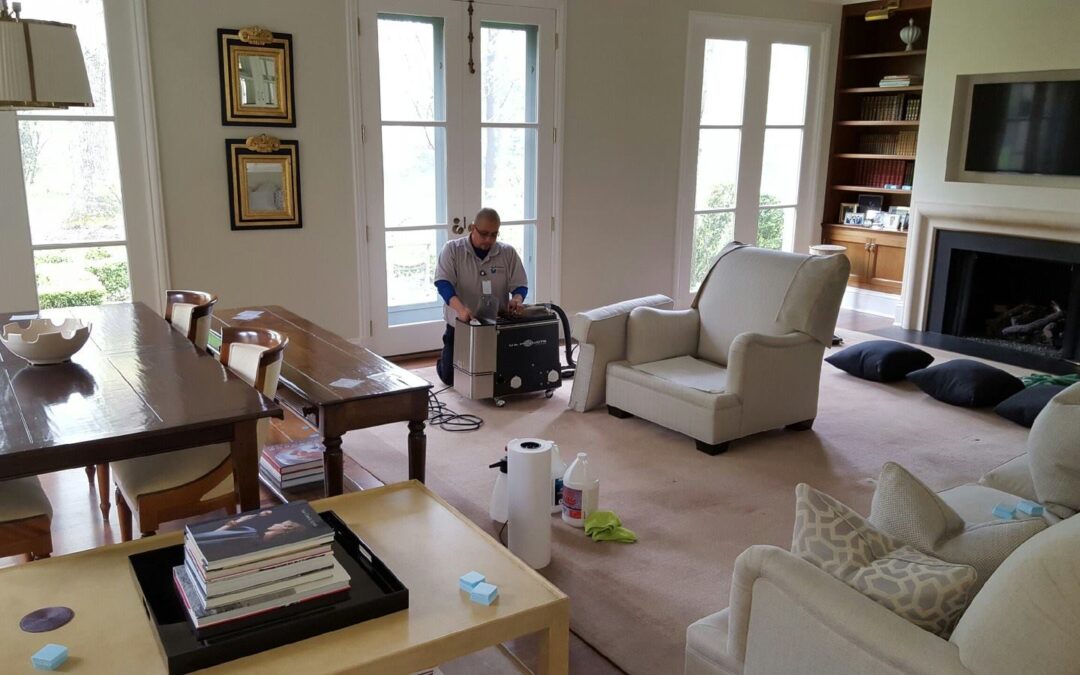The cleanliness and longevity of carpets are essential for a healthy indoor environment, especially in homes with children, pets, or sensitive individuals. Over time, carpets trap dust, allergens, and pollutants that not only affect a home’s aesthetics but also its air quality. Carpet steam cleaning, which uses superheated steam to lift deep-seated dirt from carpet fibers without harsh chemicals, is an effective method for maintaining pristine, germ-free carpets. This article explores top carpet steam cleaning techniques, step-by-step cleaning instructions, post-cleaning maintenance practices, troubleshooting tips, and guidelines for when to consider professional services.
Steam cleaning uses high-temperature water vapor to penetrate carpet fibers, loosening soil and killing bacteria. Compared to shampooing, steam cleaning simultaneously cleans and disinfects. Powerful machines release controlled superheated water that removes stubborn stains and minimizes water damage when performed correctly. In addition, steam cleaning addresses pet stains, mold, and allergy triggers. As homeowners seek eco-friendly cleaning, chemical-free methods like steam cleaning have gained appeal.
This comprehensive guide serves DIY enthusiasts and those considering professional services by covering the complete process from preparation to maintenance. Detailed instructions, troubleshooting techniques, and comparisons among different cleaning approaches provide readers with the knowledge to achieve optimal cleaning results. The guide also offers practical tips on carpet and steam interactions, cleaning frequency, and the benefits of combining vacuuming with steam cleaning—all to help homeowners maintain hygiene, carpet appearance, and indoor air quality.
Transitioning to the technical aspects, the following sections detail the benefits, instructions, maintenance, troubleshooting, and professional evaluation of steam cleaning carpets.
Explore Top Carpet Steam Cleaning Techniques for Home Use
Carpet steam cleaning uses high-temperature steam to dislodge dirt and contaminants, leaving carpets refreshed and revitalized. This method leverages superheated water vapor to penetrate fibers, removing dirt and pathogens, making it a sustainable, eco-friendly option. Techniques vary from basic home-use machines to advanced commercial-grade systems; however, the fundamental principles remain the same.
A key advantage is that steam cleaning requires minimal water and chemicals, reducing residue and the risk of water damage or mold. It cleans effectively while sanitizing by killing bacteria, viruses, and allergens. By improving the carpet’s fiber structure without leaving it overly wet, steam cleaning avoids one of the drawbacks of conventional deep cleaning methods.
Understanding these techniques involves balancing pressure, steam output, and proper pre-treatment. Modern machines offer adjustable pressure, timers, and built-in water extraction features, allowing customization for various carpet types (nylon, wool, or synthetic fibers). Furthermore, steam cleaning effectively removes pet stains, odors, and dust mites; temperatures above 200°F can eliminate up to 99% of bacteria and microorganisms, making it a preferred method over shampooing, which may leave chemical residues.
Different carpet fibers have unique moisture and heat sensitivities, so proper planning around pre-treatment, cleaning time, and drying is critical. Reviews indicate that regular steam cleaning enhances both appearance and lifespan by removing abrasive dirt particles that damage fibers. Overall, steam cleaning is both cost-effective and sustainable compared to repeatedly replacing heavily soiled carpets.
Follow Step-by-Step Instructions for Carpet Steam Cleaning
Achieving optimal results requires following a clear, step-by-step process—from preparation to the final cleaning pass—to ensure complete cleaning without carpet damage.
Start by Clearing the Cleaning Area of Furniture
Begin by removing all movable furniture and obstacles. This ensures the steam cleaner can access the entire carpet, prevents accidental damage to items and the carpet, and avoids redistributing dirt. Clearing the area also allows for a thorough pre-vacuuming to remove loose dust and particles. Use this opportunity to inspect the carpet for pre-existing stains or damage that may need special attention.
Prepare Carpets With Vacuuming Before Steam Cleaning
Before using the steam cleaner, vacuum the carpet thoroughly to remove loose dirt, dust, and pet hair. This pre-treatment allows the steam to target deeper grime without interference. Use a vacuum with strong suction—preferably one equipped with a HEPA filter—and pay special attention to corners, under furniture, and along walls. In areas with heavy soiling, consider a second vacuum pass to reduce the chance of residue clumping during steam cleaning. A well-vacuumed carpet also dries faster since less water mixes with trapped dirt.
Operate the Steam Cleaner for Maximum Efficiency
Follow the manufacturer’s instructions for operating the steam cleaner. Adjust the machine’s settings for the carpet type and soiling level. The ideal temperature is typically above 200°F to disinfect and remove stubborn dirt while avoiding damage to delicate fibers. Test a small, inconspicuous area first to check for adverse reactions like color fading.
Work in systematic, overlapping passes across the carpet. Maintain a steady pace: moving too quickly won’t clean thoroughly, and lingering too long can over-wet the carpet. Concentrate extra bursts of steam on heavily stained areas, and use available accessories (such as scrub brushes or microfiber pads) if needed. Monitor progress closely and adjust settings to avoid problems like residue buildup or prolonged moisture that could lead to mold.
Maintain Your Carpet After Steam Cleaning With Care
Post-cleaning maintenance is critical to preserving results. Proper aftercare prevents mold, odor retention, and premature wear due to residual moisture.
Allow Carpets to Dry Completely to Prevent Mold
Ensure the carpet dries completely in a well-ventilated space. Open windows, use fans, and, if necessary, dehumidifiers to speed up drying. For larger spaces or carpets that are very wet, professional drying equipment may be needed. A fully dry carpet is less likely to attract dust and prevents mold and mildew issues. During drying, restrict foot traffic and avoid placing heavy furniture back on the carpet.
Drying times vary: synthetic fibers generally dry faster than natural fibers like wool, and times can range from a few hours to 24 hours depending on ventilation and humidity. Periodically checking the moisture level helps ensure complete drying and prevents complications.
Implement Regular Maintenance Practices for Carpets
Beyond immediate drying, establish regular maintenance routines to prolong carpet life. Vacuum daily or weekly in high-traffic areas to remove surface dirt and dust. Use a carpet rake or grooming tool to restore the pile’s appearance. For households with pets or children, prompt spot cleaning is essential to prevent stains from setting.
Schedule a professional deep cleaning every 12 to 18 months to remove embedded dirt that routine vacuuming can’t reach. In addition, use protective measures such as mats at entrances and protective pads under furniture to minimize localized wear. For humid environments, using a dehumidifier can further prevent moisture buildup and mold.
Troubleshoot Common Issues During Steam Cleaning
Even with careful preparation, certain challenges may occur during steam cleaning. Common issues include stubborn stains, excess moisture retention, carpet damage, and reduced machine performance. Addressing these issues promptly will protect the carpet’s integrity and enhance cleaning outcomes.
Resolve Stains That Resist Steam Cleaning Effectively
Some stains, such as wine, pet accidents, or set-in food spills, may resist initial steam cleaning. Apply a pre-treatment solution designed for stain removal to break down the stain’s composition. Allow the pre-treatment to work for 10 to 15 minutes, then use extra bursts of steam on the area. For organic stains, enzymatic cleaners can be effective; however, always rinse thoroughly to prevent chemical residues that may attract dirt. Adjust steam pressure as needed, and if necessary, call in professional cleaners for persistent stains.
Address Carpet Damage Caused by Excess Moisture
Excess moisture can cause shrinkage, discoloration, or mold. Ensure your steam cleaner’s water extraction function is working correctly. If the carpet is too wet, use a high-powered wet/dry vacuum on a low setting to remove the residual water, and press clean, dry towels against the surface to absorb extra moisture. Enhance drying with fans or dehumidifiers. If damage occurs, let the carpet dry completely before considering repair options such as patch adhesives or professional restoration services.
Learn How to Optimize Steam Cleaner Performance
To maintain peak performance, regularly inspect and clean your steam cleaner by removing mineral deposits and checking filters. Adjust water temperature and pressure based on the carpet type—synthetic fibers may tolerate higher heat than delicate ones. Replace worn components like nozzle tips and brushes as needed, and consult manufacturer tutorials for proper usage techniques. Proper operating technique, which includes consistent overlapping strokes and allowing brief intervals between passes, helps prevent over-saturation and improves cleaning efficiency.
Evaluate Professional Carpet Steam Cleaning Services Available
While many homeowners manage steam cleaning themselves, professional services may yield superior results for heavily soiled areas, difficult stains, or large-scale projects. Professionals use advanced equipment and standardized procedures that can address severe water damage and deeply embedded dirt more efficiently than consumer-grade machines.
Compare Costs of Professional Services vs. DIY Methods
Cost is an important factor when choosing between DIY methods and hiring professional services. Although purchasing a high-quality steam cleaner may seem economical over time, professional services offer the expertise, advanced equipment, and efficiency of trained technicians. Professionals typically charge per room or per square foot, and while DIY options may save money initially, they may not match the deep cleaning and sanitization achieved by experts. Consider additional expenses such as cleaning solutions, equipment maintenance, and energy usage when evaluating costs.
Research Reputable Carpet Cleaning Companies Near You
Choosing the right professional cleaning service provider involves thorough research. Look for companies with positive reviews, local accreditation, and a strong track record in carpet and upholstery cleaning like Wiz Team Inc. Certifications from organizations like the Institute of Inspection, Cleaning and Restoration Certification (IICRC) indicate adherence to quality practices. Reading customer testimonials and requesting detailed estimates will help ensure you select a provider that meets your needs, including any additional services such as tile and grout or upholstery cleaning.
Assess Customer Reviews for Quality Assurance
Customer reviews are vital for gauging the reliability and performance of professional carpet cleaning services. Look for consistent praise regarding stain removal, drying times, and professionalism. Pay attention to how companies respond to negative feedback; a responsive company that addresses issues and offers remediation is often more reliable. Reviews that mention repeat business or referrals are strong indicators of quality. This due diligence helps ensure you receive excellent service that meets your expectations.




